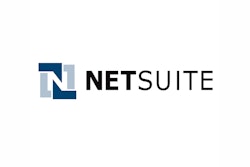When companies strive for efficiency and cost savings in their supply chains, one often overlooked element is MRO—maintenance, repair and operations. By not paying enough—or often, any—attention to it, hundreds of thousands of dollars or more can be left on the table.
According to information and analytics firm IHS Inc., MRO is seen as a cost of doing business with companies ignoring the fact that related inventory serves a purpose in the grander scheme, affecting asset utilization, safety and operational performance. Involvement is limited to infrequent requests to cut MRO inventory or find cheaper suppliers, with little thought given to the broader role impacting an organization’s profit margins, shareholder value and operational excellence goals.
To learn more about how organizations are using MRO, Supply & Demand Chain Executive magazine and IHS conducted a benchmarking study of the opportunities and challenges that could potentially impact asset performance, capacity, cash flow and operational risk. Its primary focus was to benchmark the maturity and performance of peer MRO programs, as well as understand linkages between MRO supply chain improvement initiatives and operational excellence programs.
The survey was created with three objectives in mind:
- Establish the current health of MRO programs within global, asset-intensive companies.
- Identify drivers and challenges for improving MRO programs.
- Explore peer operational excellence management systems and linkages to performance improvements.
Demographics
Of the survey’s approximately 200 respondents, two-thirds work in Sourcing & Procurement (26.74 percent), Manufacturing & Operations (20.32 percent) and Supply Chain—including Supply/Supplier Management—(20.32 percent). The bulk of the respondents were at the managerial or director level with about 15 percent at the vice president or C-suite level.
Almost half of the respondents represented companies reporting revenues of $1 billion to $10 billion or more. These clearly are businesses that can leave large amounts of money on the table if their MRO operations are not up to par. Although more than 50 percent are North American-based (U.S. and Canada), global firms are well-represented in this survey. About 17 percent are in Europe, 20 percent in Asia (including China and India) and just over 5 percent in South America. Not surprisingly, their industries range across the board in most manufacturing and non-manufacturing verticals.
MRO: A Clear Priority for Investment in Performance Improvement
InitiativesAsked to select their top two areas of concentration for the coming year, MRO supply chain processes and workflows (31.18 percent), and inventory management (30 percent) were named as top priorities. Supplier performance management was next at 19.41 percent, closely followed by materials spend management at 18.82 percent and enterprise resource planning (ERP)/enterprise asset management (EAM) consolidation at 16.47 percent. Operational risk management (12.35 percent) and asset performance management (10.59 percent) also received notable responses.
Seemingly, some companies established their 2014 budgets with MRO in mind. Just less than 25 percent slated more than $2 million for MRO spend, 9.1 percent planned to spend between $100,000 and $300,000, and 8.24 percent budgeted for $700,000 to $1 million. Another 7 percent planned to spend between $1 and $2 million dollars.
In actuality, 23.5 percent of respondents said that they were on budget and 14.71 percent were below budget. The remaining 46 percent (less the 15.69 percent who answered “don’t know”) were over budget by anywhere from 1 percent to more than 20 percent. This shows that the preponderance of the respondents and their companies are aware of MRO’s importance, but perhaps not acting on it with enough emphasis.
And what were they budgeting for? The two largest areas by far were MRO supply chain processes and workflows (31.2 percent), and inventory management (30 percent). Just below 20 percent targeted supplier performance management and materials spend management.
Organizations that responded to this survey are planning to spend in the upcoming 12 months: 40.5 percent said that it will be on inventory optimization, which ties into the previous year’s budgeting plan. Another 32 percent will invest in supplier consolidation, which will provide more visibility into their supply chains. Other MRO-related areas that will see investment include asset management (18.3 percent), spend analytics (16 percent), predictive (14.5 percent) and preventive maintenance (9.9 percent). In addition, about 26 percent plan to invest in ERP.
MRO Systems, Data, and Governance a Top Concern
Data governance is a growing discipline, whereby organizations are seeking more control over their processes and methods in gathering and using data. Yet almost 20 percent of survey respondents said that, not only was their data unclean, but they also had no governance in place. A third of them said that their data was clean and even structured somewhat, but did not have governance. Another 27 percent said, yes, their data was clean and structured with governance, but not globally integrated. Only 8 percent acknowledged that their data was clean, structured with governance and globally integrated. The remainder said that they didn’t know.
So, less than one in 10 respondents had clean, structured data throughout their entire organization. It’s obvious that there is much work to do. One respondent wrote, “The biggest road block moving forward is dealing with a disjointed workflow process due to multiple applications being used, and the unwillingness of purchasing and logistics to move over to an integrated EAM/ERP system.”
Facing Disaster
There are many scenarios that can cause organizations to fall short of meeting performance objectives and/or production quotas. Those causing the greatest concern for the survey respondents were grouped together within a few percentage points. For example, “inconsistent and unstandardized MRO master catalog from lack of taxonomy, technology, processes and best practices” and “overspending on MRO inventory because have no way to track and manage spend, and consolidate suppliers” were at 14.9 and 14.1 percent, respectively.
Grouped at around 12 percent were “MRO inventory issues: stock-outs, no critical part identification, inaccurate lead times;” “high risk of catastrophic events, such as major environmental spills, injuries and fatalities due to extreme asset failure;” and “poor product quality and possible recalls due to inefficient asset management and quality management programs.”
So, what’s the top driver? What will it take to get companies to take action and improve their MRO programs?Around 31 percent said that significantly increased MRO spend year over year would do the trick. Another 20 percent pointed to an unmanageable MRO master catalog with inconsistent and unstandardized data, and no data governance. Respondents cited multiple asset failures and disruptions (11.6 percent), and a lack of an inventory management program (11.6 percent).
Not everyone is ready, though. When asked if they have any plans to rationalize their MRO spare parts and establish data governance for ongoing catalog maintenance, just 20 percent answered in the affirmative. About 9 percent budged for 2014 and 19.2 percent for 2015, while 23.7 percent said within three years and 27.4 percent said they had no plans at all to make this vital investment.
Operational Excellence (OE)
More than half of respondents have an operational excellence initiative and supporting framework, a quarter said that they didn’t and the remainder didn’t know. Most of those who have the initiative did so recently, 63 percent within the last four years and 15 percent of them within the last 12 months.
Of those with operational excellence systems in place, the study followed up by asking if they saw improvements within their team’s performance by linking their functional goals and objectives to the corporate OE strategy. The responses indicated that there is a significant correlation between companies that have strong OE programs and functional areas that experienced notable improvements in performance. Around 79 percent of respondents saw either “some improvement” or “great improvement” in their functional areas. Another 8.7 percent cited “significant improvement” in their particular area. Almost 2 percent said that their companies had a “complete performance transformation.”
And isn’t that what we’re all after?



















